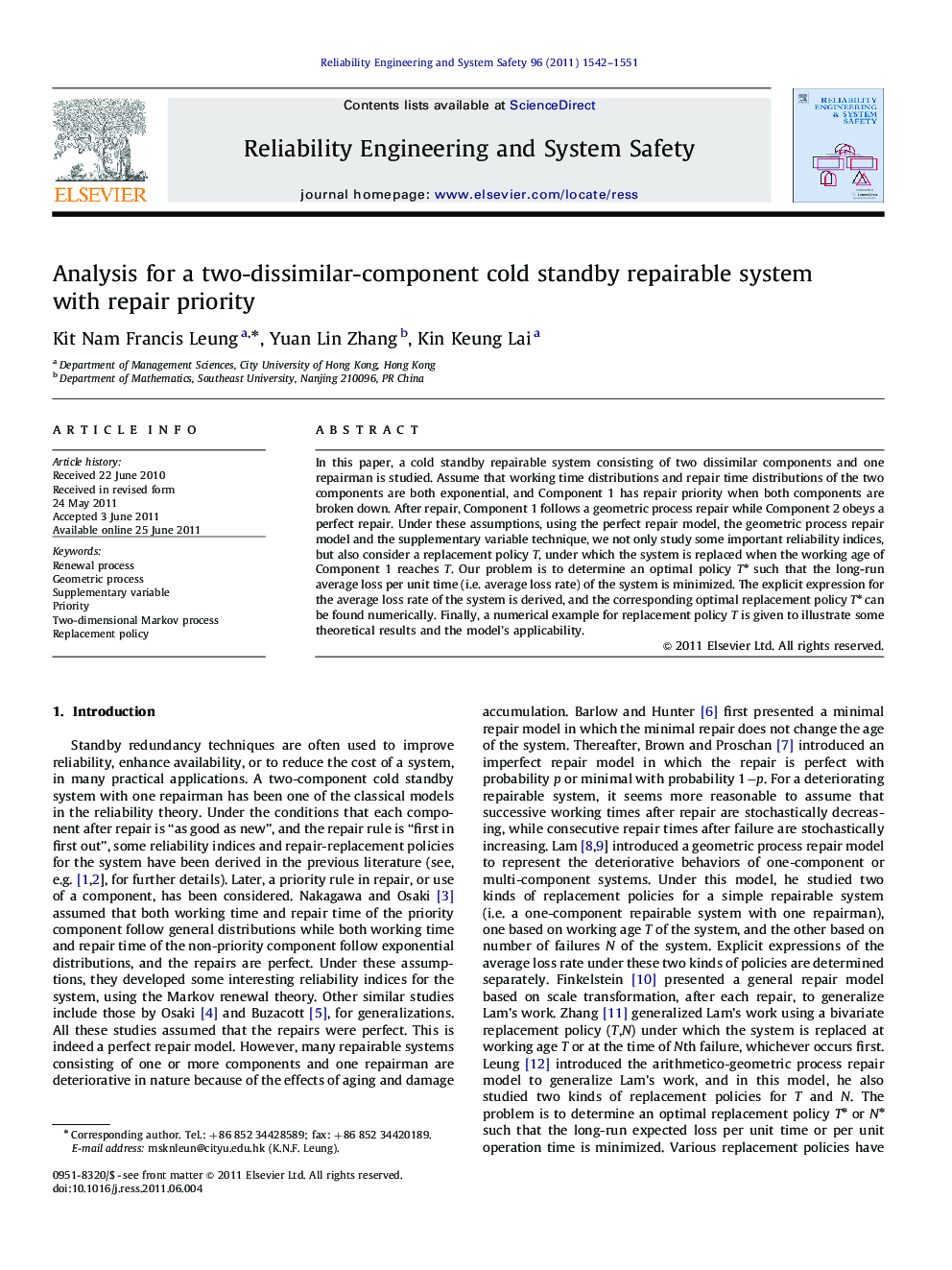| کد مقاله | کد نشریه | سال انتشار | مقاله انگلیسی | نسخه تمام متن |
|---|---|---|---|---|
| 805790 | 905208 | 2011 | 10 صفحه PDF | دانلود رایگان |

In this paper, a cold standby repairable system consisting of two dissimilar components and one repairman is studied. Assume that working time distributions and repair time distributions of the two components are both exponential, and Component 1 has repair priority when both components are broken down. After repair, Component 1 follows a geometric process repair while Component 2 obeys a perfect repair. Under these assumptions, using the perfect repair model, the geometric process repair model and the supplementary variable technique, we not only study some important reliability indices, but also consider a replacement policy T, under which the system is replaced when the working age of Component 1 reaches T. Our problem is to determine an optimal policy T⁎ such that the long-run average loss per unit time (i.e. average loss rate) of the system is minimized. The explicit expression for the average loss rate of the system is derived, and the corresponding optimal replacement policy T⁎ can be found numerically. Finally, a numerical example for replacement policy T is given to illustrate some theoretical results and the model's applicability.
► A two-dissimilar-component cold standby system with repair priority is formulated.
► The successive up/repair times of Component 1 form a decreasing/increasing geometric process.
► Not only some reliability indices but also a replacement policy are studied.
Journal: Reliability Engineering & System Safety - Volume 96, Issue 11, November 2011, Pages 1542–1551